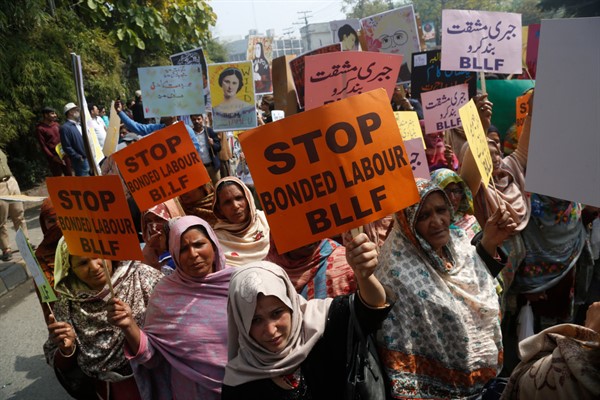Of the many injustices in the contemporary world, modern slavery is among the most shocking. The trade in humans is a worldwide phenomenon. It spans the poorest and wealthiest countries and is deeply embedded in global supply chains. This is not only an ethical outrage but a threat to international security, prosperity, good governance and development. As the world seeks to “build back better” from the COVID-19 pandemic, it must tackle the scourge of human bondage.
Slavery is one of the oldest human institutions, and it remains stubbornly persistent. The global abolitionist movement, which originated in the late 18th century, eventually succeeded in outlawing formal chattel slavery by the mid-20th century—one of the signal moral advances in human history. The global prohibition against slavery is embedded in numerous international legal instruments, including the Universal Declaration of Human Rights, signed in 1948.
Despite these efforts, human servitude persists, although its character has changed over time. Every year, some 25 million people are trafficked globally for forced labor or sexual exploitation, generating some $150 billion in revenue for perpetrators, according to the International Labor Organization, or ILO. That makes modern slavery one of the most lucrative forms of international crime. Most victims are trafficked within their own countries, but a large proportion are transported across borders. The majority of those trafficked are women and girls.

